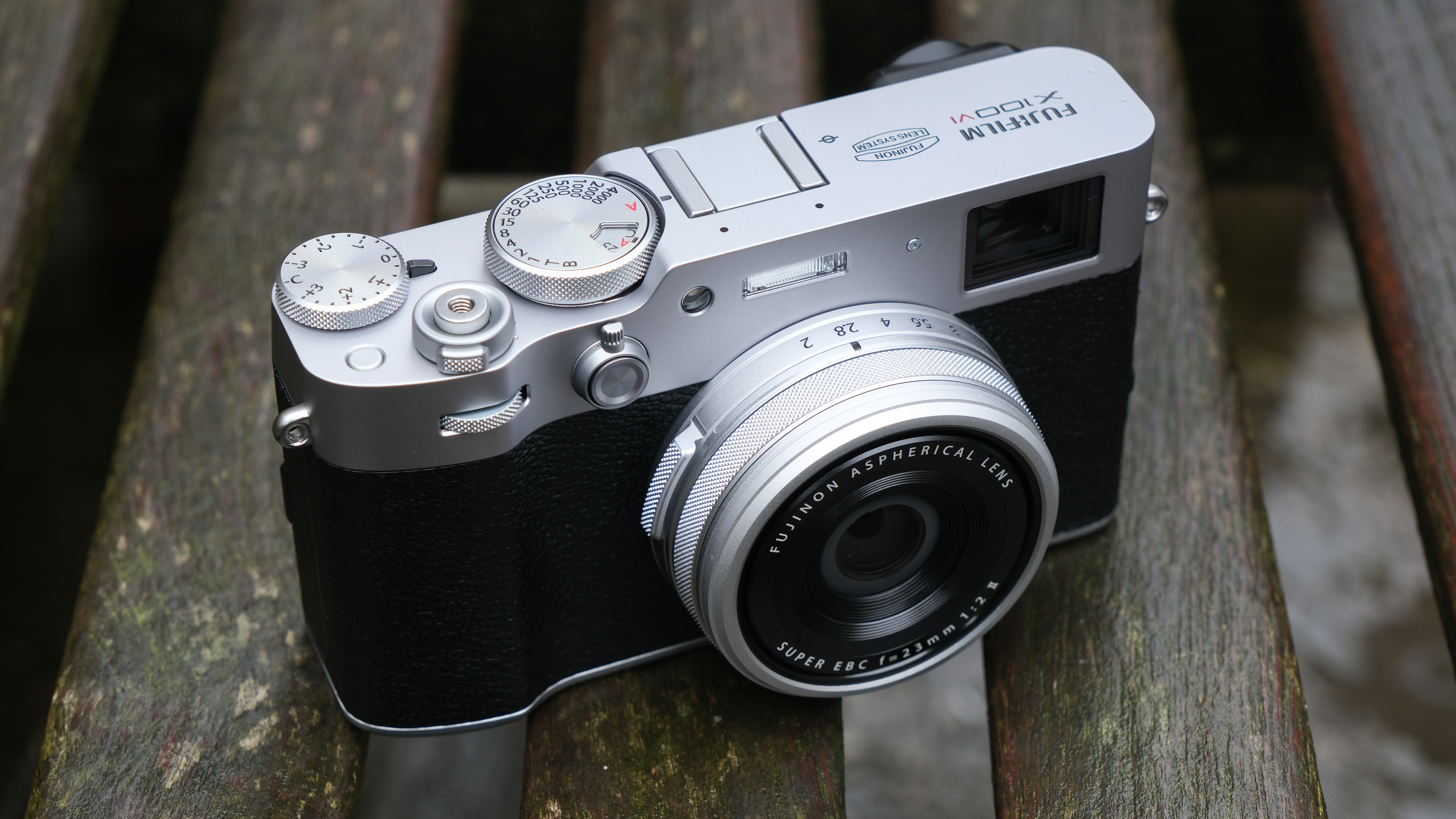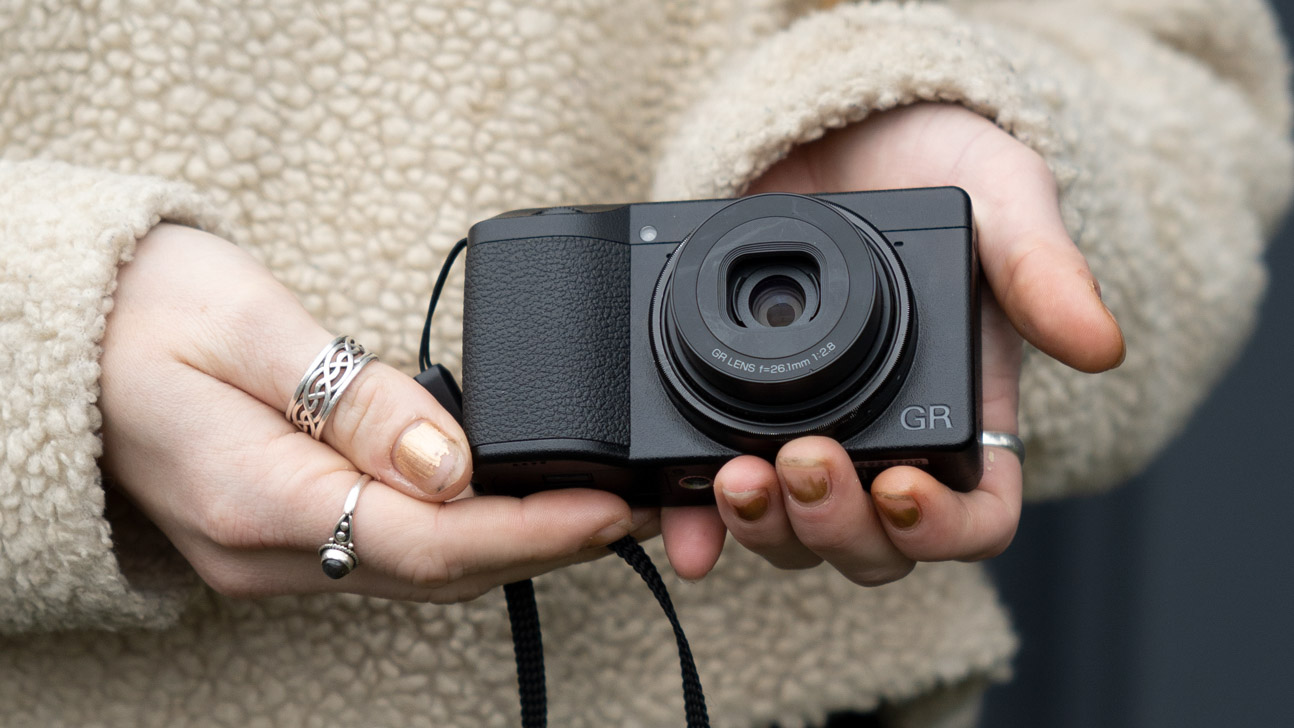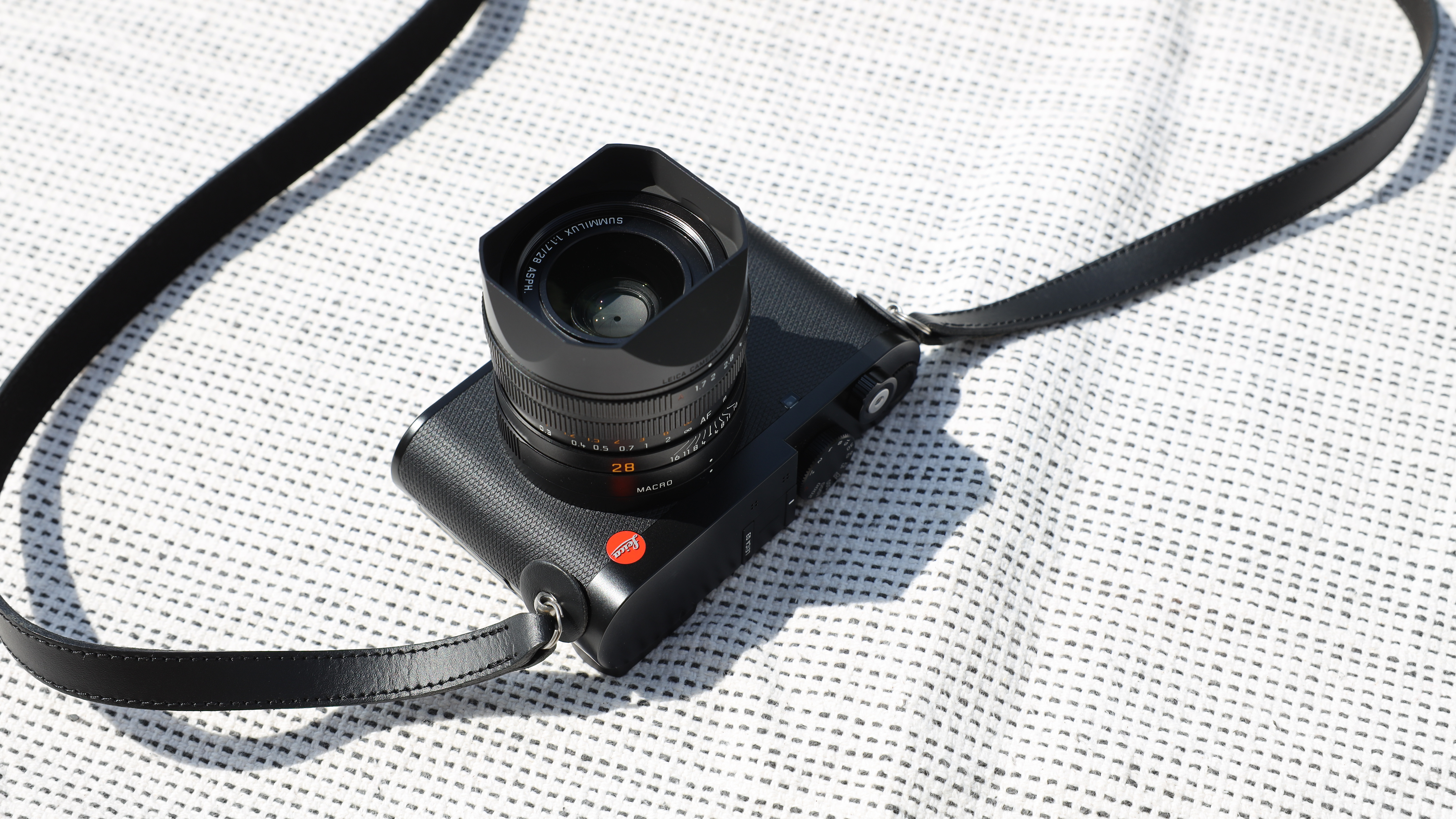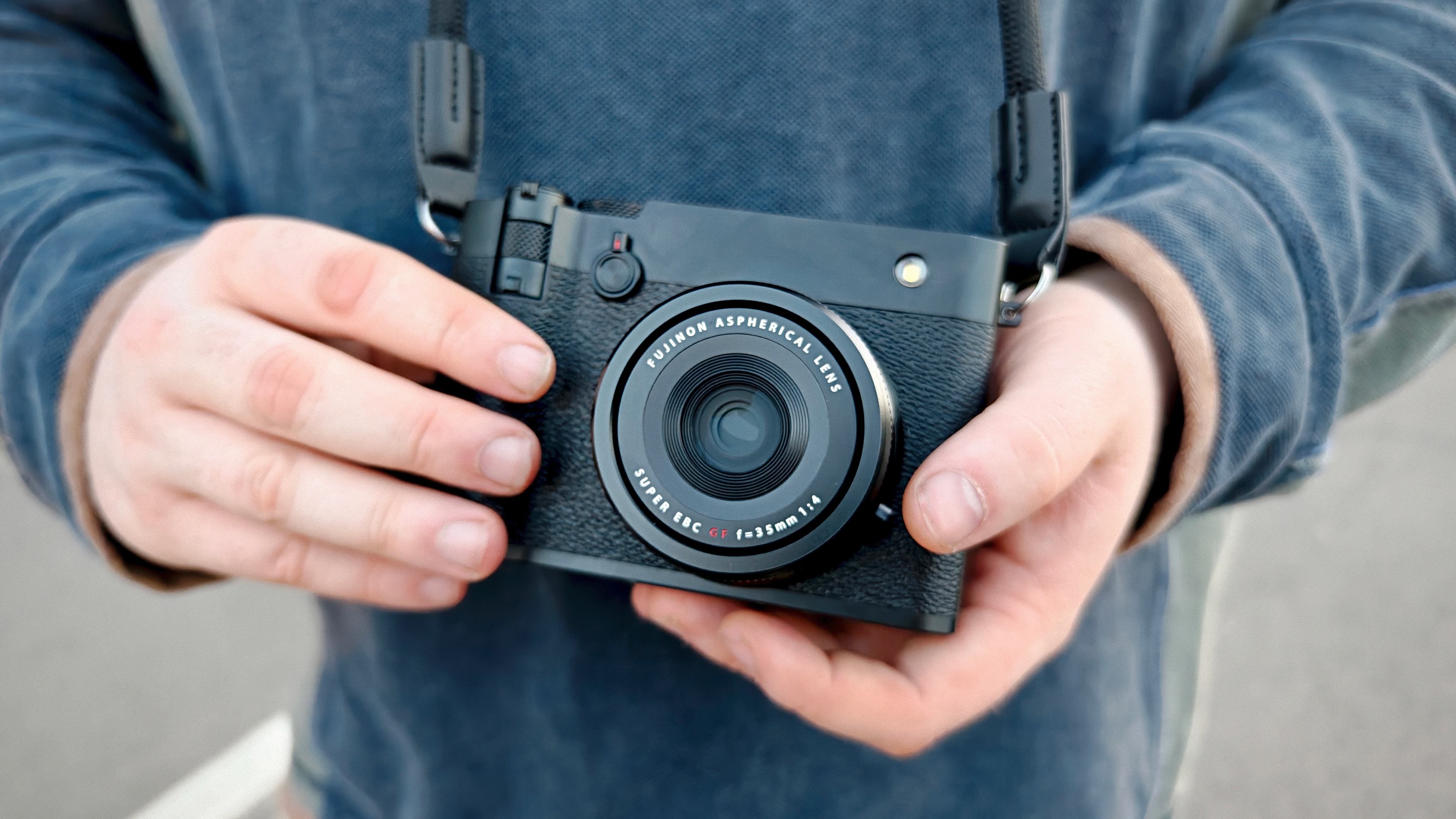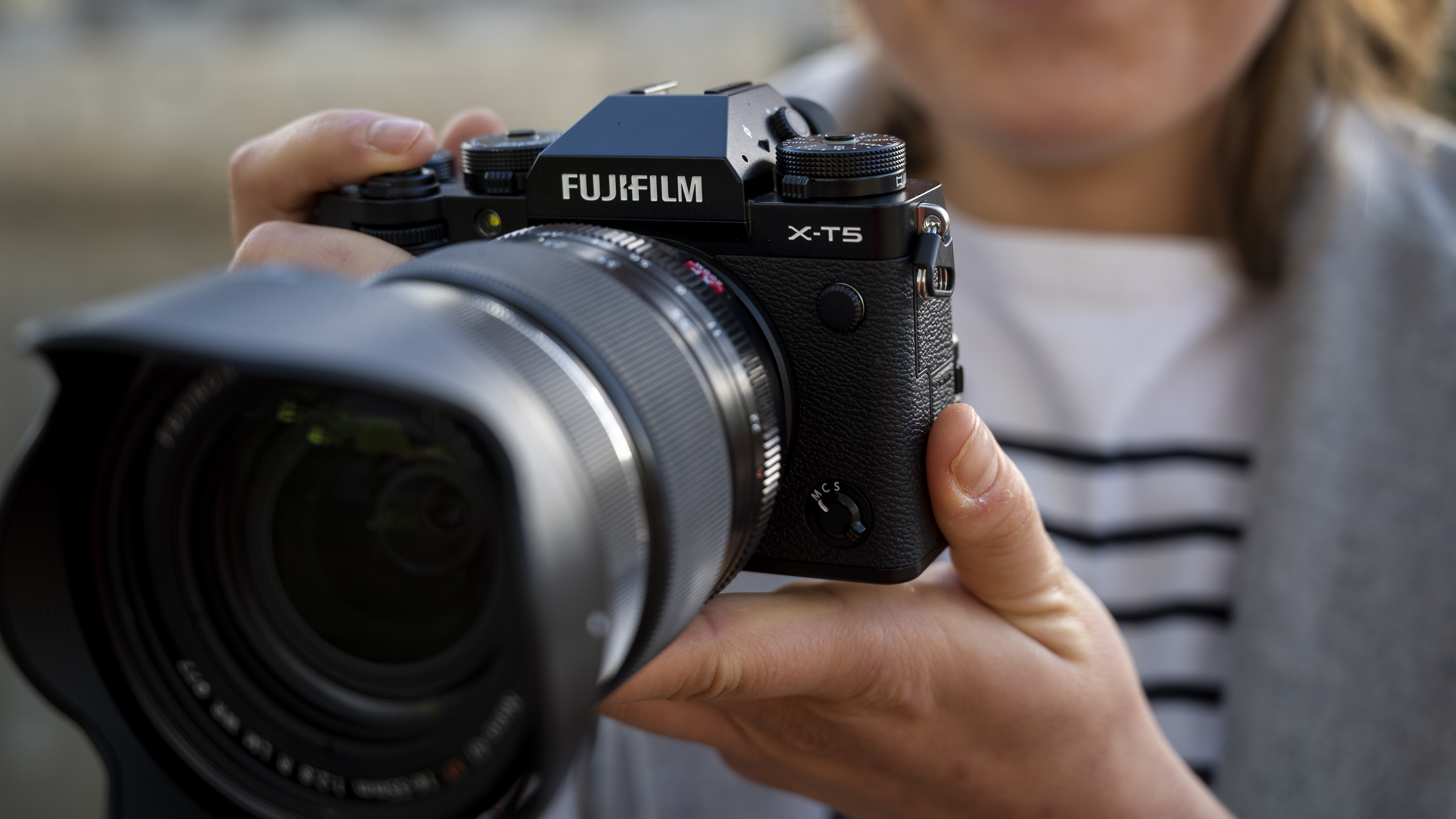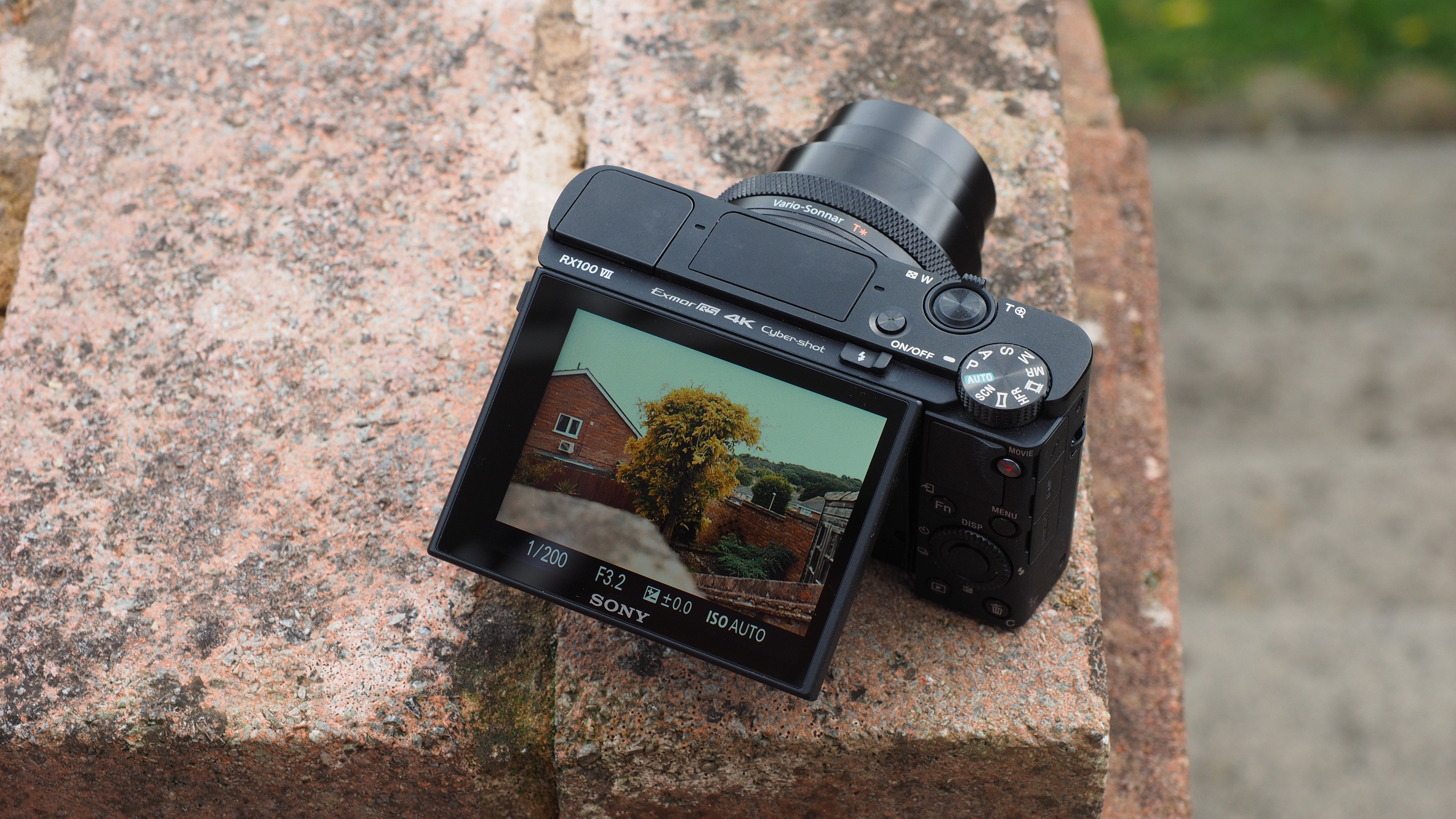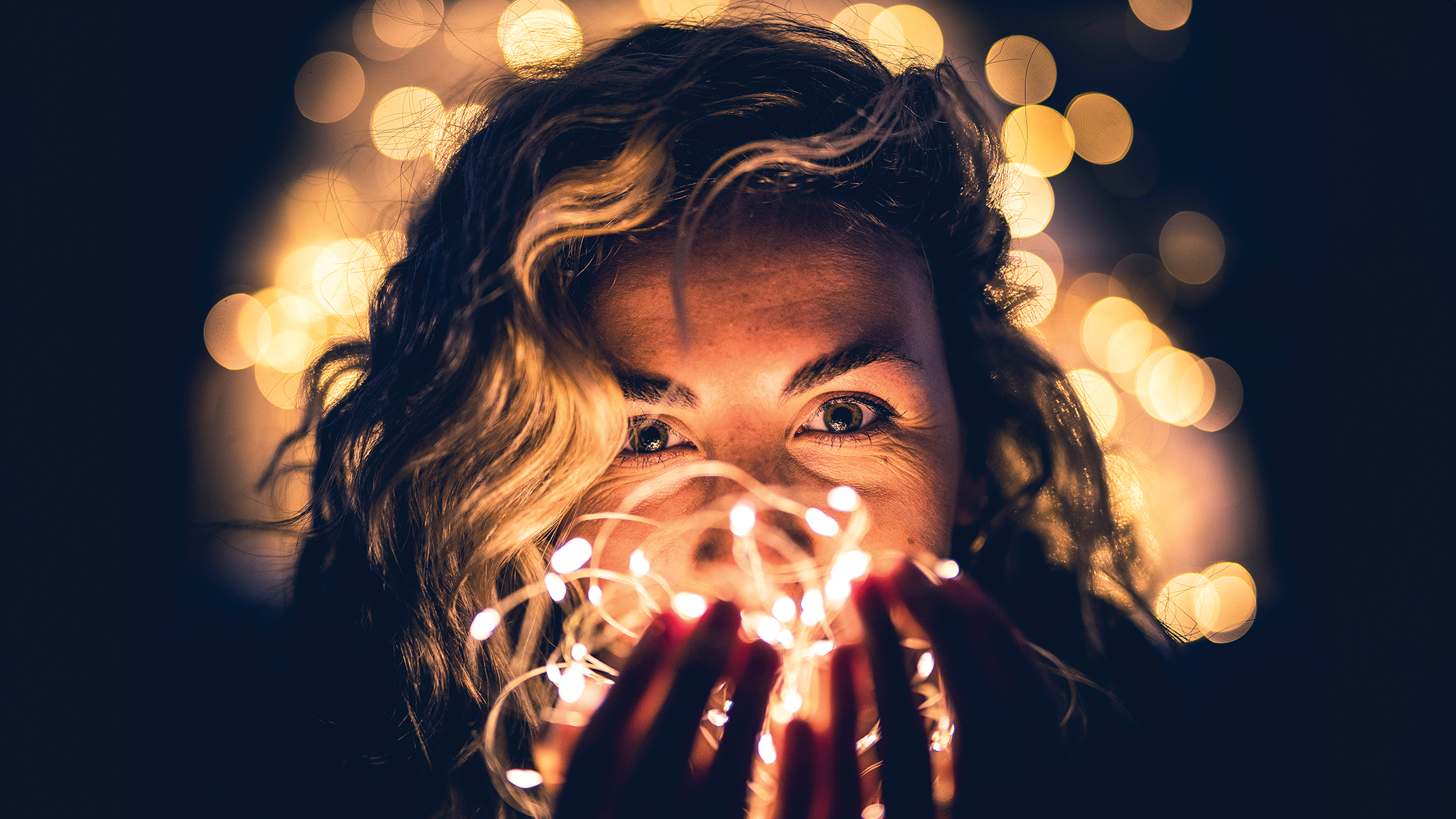The best camera for street photography in 2025
The best camera for street photography will be discreet, have accurate autofocus and a vintage design won't go amiss
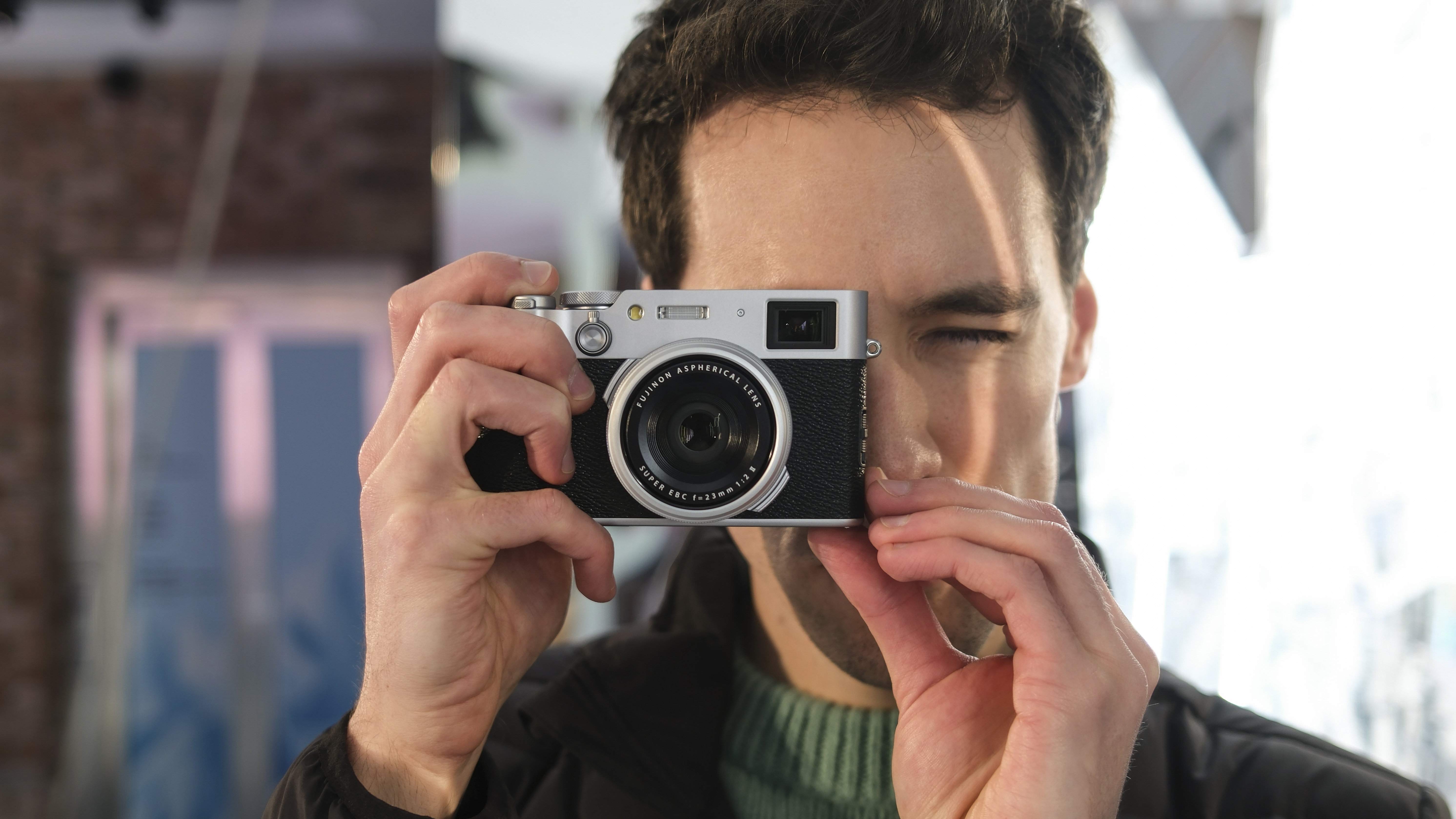
The best street camera isn’t just about specs it's about feel. Street work is immersive and fast, so your camera needs to be quick, responsive, and discreet, ready to catch fleeting moments as the world unfolds.
You’ll find slim compacts and mirrorless bodies here with an emphasis on speed. A big zoom isn’t essential for street; that’s why many of our picks use prime lenses for extra sharpness and brighter apertures in place of reach. No surprise, then, that my top choice is the gorgeous Fujifilm X100VI. There are excellent alternatives too, including the newly released Ricoh GR IV, which we hope to test soon.
Our team has fully tested every camera on this list - I’ve personally pounded the streets of London (and beyond) with many of them. Read on to see which models made the cut.

Gareth is the Reviews Editor at Digital Camera World, and the person in charge of approving all the latest camera-related tech. Spending a lot of time out on the streets of London snapping away, he knows a thing or two about which cameras work well for discreet street cameras. Outside of this, expect to find him cycling around, or deep in a Netflix binge.
The Quick List
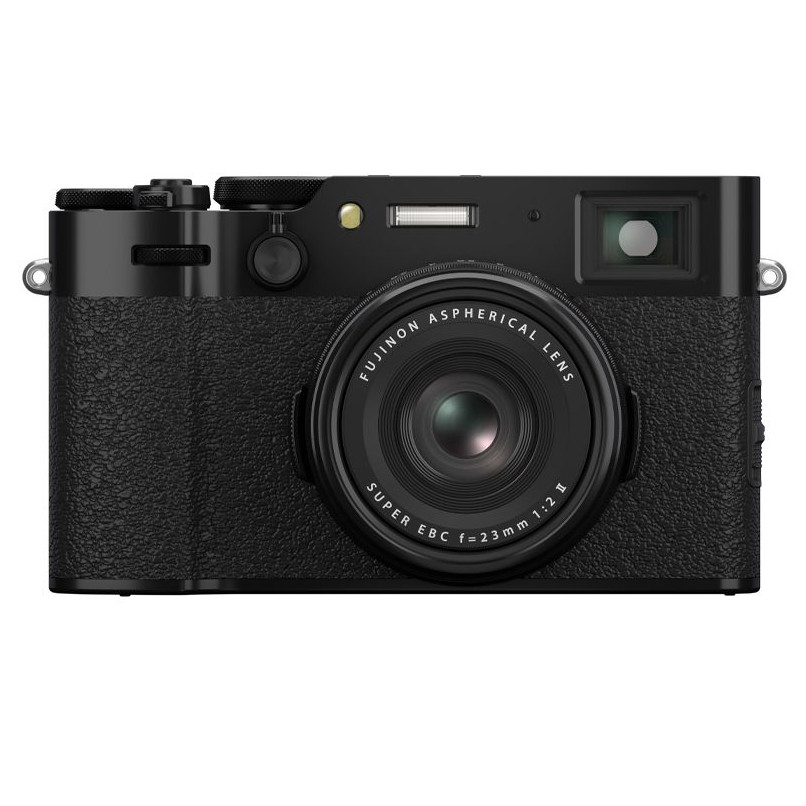
Bags of style backed up with serious imaging tech, the Fujifilm X100VI has it all. The fifth in a line of prime-lens compacts, the X100VI eschews zoom range in favor of a catch-it-all focal length and supreme image quality.
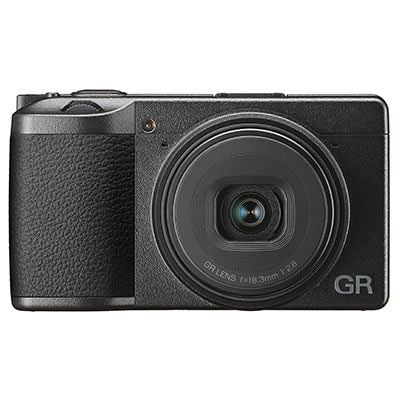
The GR III series, is a great option for street photography, so much so that it even comes in a dedicated "street edition" with a pop-on viewfinder and natty yellow stripe included. The GR IIIx's longer lens is good for picking out details in scenes.
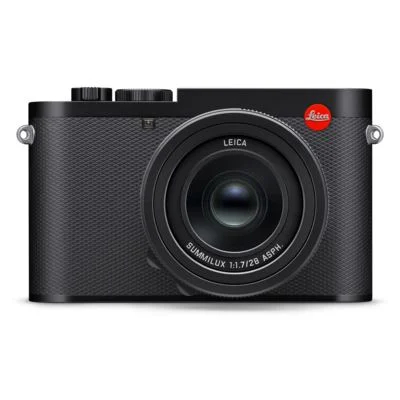
If you want the best of the best compact cameras on the market, one with a 60MP sensor, a whole lot of street-cred, and a super-sharp fixed 20mm f/1.7 Summilux lens, then look no further.
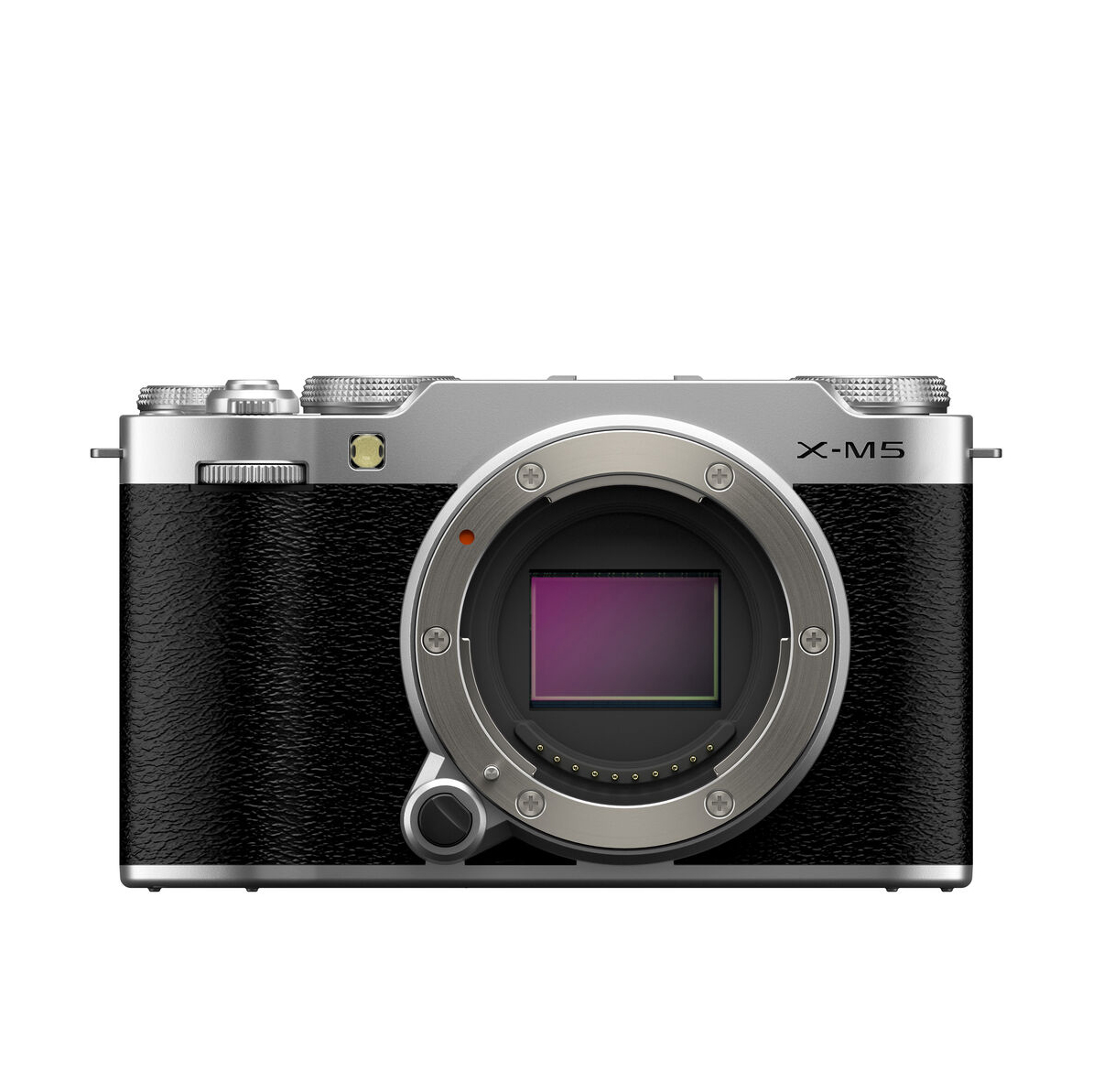
The Fujifilm X-M5 is a small and affordable camera perfect for street photographers. Its stylish design, interchangeable lenses, high-quality touchscreen, and reliable autofocus make it easy to use. With impressive image quality and video features, the X-M5 offers excellent functionality at a competitive price.
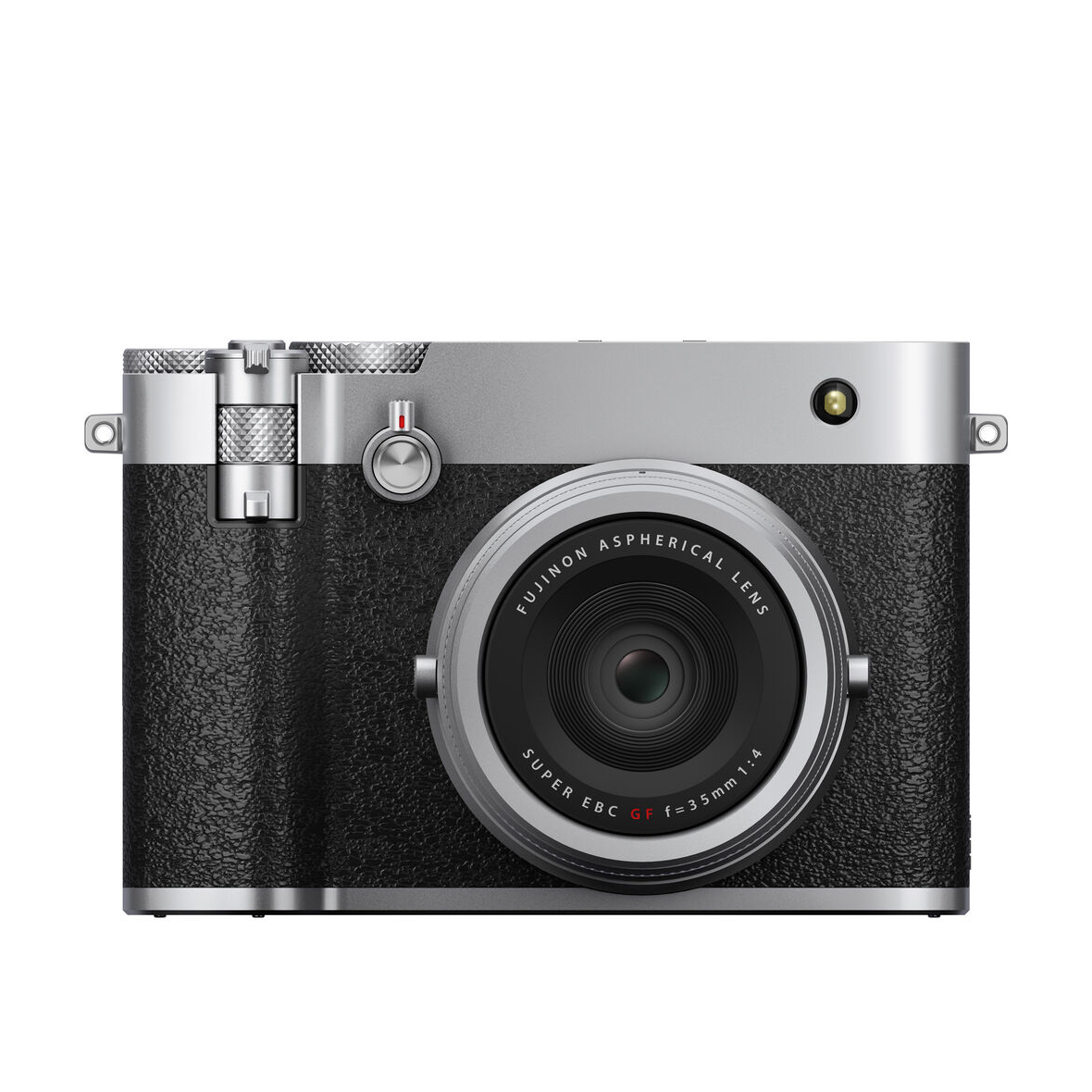
With a stunning 102MP medium-format sensor, the Fujifilm GFX produces simply sublime imagery. It's a marvel of engineering: a medium format camera that focuses and shoots fast enough to be genuinely useable for street photography.
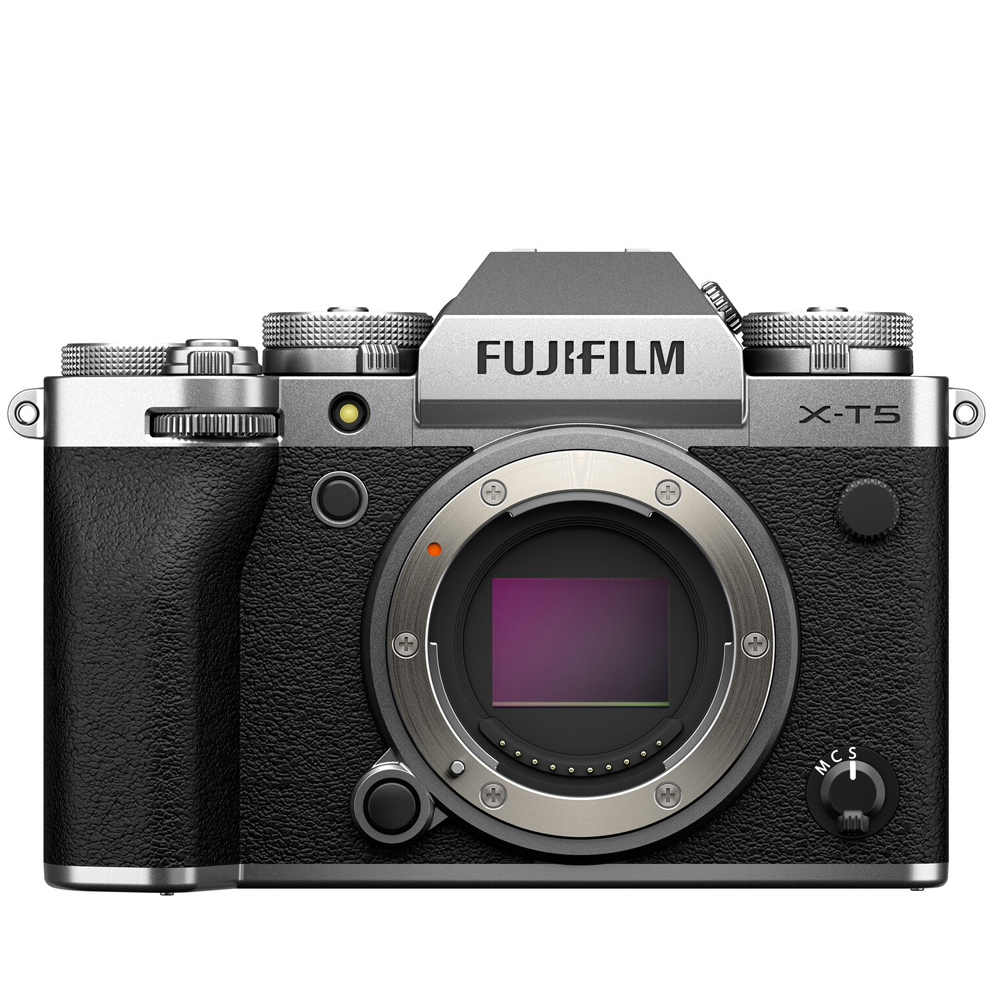
The Fujifilm X-T5 is a classic SLR-style camera with modern features, perfect for street photography. Its 40.2MP sensor offers great flexibility for capturing urban scenes, while the 3-way tilting touchscreen adds flexibility to image composition.
View more...
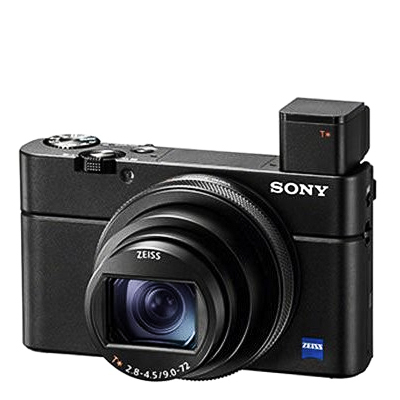
The Sony RX100 VII is a brilliant compact camera that is small enough to allow you to go practically unnoticed. However, despite being pocketable, it's also highly versatile, with a long equivalent zoom lens that goes all the way from wide to telephoto.
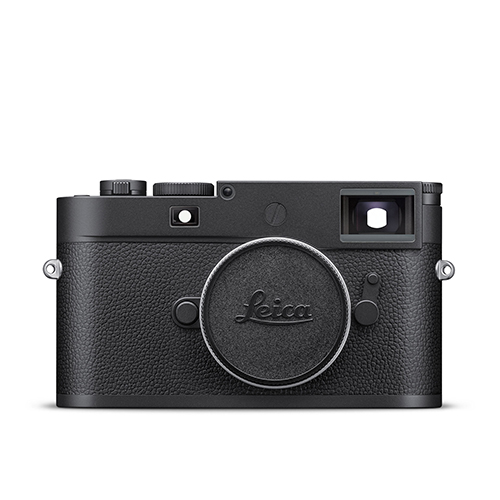
The Leica Monochrom is quite the specialist. With a rangefinder design, a strictly monochrome sensor and a manual focusing system, the camera might be limiting for many purposes, but on the streets, it is perfect.
Best cameras for street photography in 2025
Why you can trust Digital Camera World
Best street photography camera overall
Specifications
Reasons to buy
Reasons to avoid
✅You want true stealth: the near-silent leaf shutter keeps you invisible in quiet streets and cafés.
✅You want ready-to-share looks: Fuji’s film simulations deliver punchy monochrome or chrome-y color straight out of the camera.
❌You want bottomless battery life: a spare is wise for long urban walks, especially if you chimp, use the EVF, or shoot video.
❌You want flexibility in tight spaces: the fixed 35mm equiv can feel cramped indoors - no zoom, and converters add bulk.
Bags of style backed up with serious imaging tech, the Fujifilm X100VI has it all. The fifth in a line of prime-lens compacts, the X100VI eschews zoom range in favor of a catch-it-all focal length and supreme image quality.
In our review, we found it to be a supremely enjoyable camera to use, I'd say it's one of the most purely enjoyable cameras that’s ever been made.
The X100V has evidently been put together with street photographers in mind; its dial-based controls hark back to the old days of street photography, while its hybrid optical/electronic viewfinder is one of the best examples of its type on any mirrorless camera, full-stop. All of this does come at a price, but if you can justify the expense, it’s worth it.
Read more: Fujifilm X100VI review
Features | 40MP sensor backed up by Fuji's film simulations, 6.2k video, and IBIS all improve on the previous model | ★★★★★ |
Build & handling | Gorgeous, well-constructed, retro-inspired body with an incredible hybrid viewfinder. | ★★★★★ |
Performance | Excellent photo performance, with stills from the 40MP sensor and prime lens looking stunning. | ★★★★★ |
Value | The quality is top notch, but it doesn't come cheap, and its popularity means the price ain't coming down. | ★★★★☆ |
Best street photography camera for stealth
Specifications
Reasons to buy
Reasons to avoid
✅You want true pocketability: a 40mm-equiv APS-C camera that actually slips into a jeans pocket for go-everywhere street work.
✅You want mid-day control: a built-in ND filter lets you hold slower speeds or wider apertures in harsh light.
❌You want the classic wide look: 40mm-equiv is tighter than 28/35mm, so cramped alleys and layered wides are trickier.
❌You want f/2 speed: the lens is f/2.8, so subject isolation and low-light headroom are more limited than faster primes.
The Ricoh GR cameras have acquired something of a cult following. Their fans will extol, to anyone who’ll listen, the virtues of their slim build and large sensor, a feature combination that makes the most recent model, the GR IIIx, a great option for street photography, so much so that it even comes in a dedicated "street edition" with a pop-on viewfinder and natty yellow stripe included.
With impressive features like three-axis image stabilization, a high maximum ISO of 102,400, and a lean start-up time of just 0.8sec, the GR III has the imaging cred to back up its looks.
Also consider the Ricoh has come out with an alternative version of the GR IIIx, the Ricoh GR III. It's basically the same camera, but with one crucial difference – it swaps the 40mm equivalent lens for a 28mm equivalent. Neither of these is necessarily better for street photography; it's just about personal preference. If you like the sound of the wide perspective then the Ricoh GR III is for you, but think you might prefer a closer, tighter perspective, consider the Ricoh GR IIIx!
Recently, we've seen the arrival of the long-awaited successor to this camera: the Ricoh GR IV, with a new 25.7MP back-illuminated CMOS sensor and a GR ENGINE 7 processor that should deliver ultra-fast performance. It's currently available for pre-order and is making its way through our testing process. Once we publish our full review, I'll decide if it merits inclusion in this guide, or if the cheaper Ricoh GR IIIx remains the better choice.
Read more: Ricoh GR IIIx review
Features | A niche 40mm focal length with 24MP APS-C sensor in a pocketable size makes this great for street. | ★★★★★ |
Build & handling | Due to its tiny size it can be difficult to hold at times, but thanks to its all heavy-duty plastic construction, it's lightweight. | ★★★★☆ |
Performance | Produces excellent images, and allows you to remain all but unseen while doing it. | ★★★★★ |
Value | Not cheap, but fairly priced I think for anyone looking for a small powerhouse. | ★★★★☆ |
Best premium compact camera for street photography
Specifications
Reasons to buy
Reasons to avoid
✅You want speed in changing light: the fixed 28mm f/1.7 is bright for night scenes, tunnels, and moody interiors.
✅You want full-frame flexibility: the 60MP sensor gives cropping headroom and useful 35/50/75/90mm crop modes with framelines.
❌You want interchangeable versatility: one lens only - if you live at 35/50mm or crave ultrawide, you can’t swap glass.
❌You want the classic 35 or 50 look natively: it’s a fixed 28mm - digital crops help, but perspective stays 28mm.
The Leica Q3's 60MP sensor never failed to impress me, producing breathtaking images that capture every detail. I particularly enjoyed the digital crop feature, which adds a fun element of experimentation to the fixed 28mm f/1.7 lens.
Each shot I took showcased Leica's remarkable processing, with colors that pop with exceptional dynamic range, making it the perfect compact camera for Street photography. The autofocus is quick and precise, especially when it comes to subject focusing, thanks to its efficient human and eye detection capabilities.
However, I've found that the animal detection feature leaves much to be desired. It often misidentifies inanimate objects rather than living creatures however, I suspect this could be improved with firmware updates. In terms of video, the Leica Q3 delivers high-quality 8K footage in various professional codecs, but I've noticed that image stabilization struggles with handheld shake.
Despite these drawbacks, the Leica Q3 remains a standout camera for everyday use, and it easily earns its reputation as one of the best compact cameras for street photography available today. Unfortunately, being a Leica, its lofty price tag makes it inaccessible to many photographers, which is a disappointment.
Read more: Leica Q3 review
Features | 60 megapixels 8K video, subject recognition and tracking. Top stuff. | ★★★★★ |
Build & handling | Built like a tank with an amazing 28mm f/1.7 lens, and it just feels great to use. | ★★★★☆ |
Performance | Amazing image quality, decent autofocus, user-friendly operation. | ★★★★☆ |
Value | This is a luxury, handmade camera, and it comes at the usual Leica premium. | ★★★☆☆ |
Best street photography camera for price
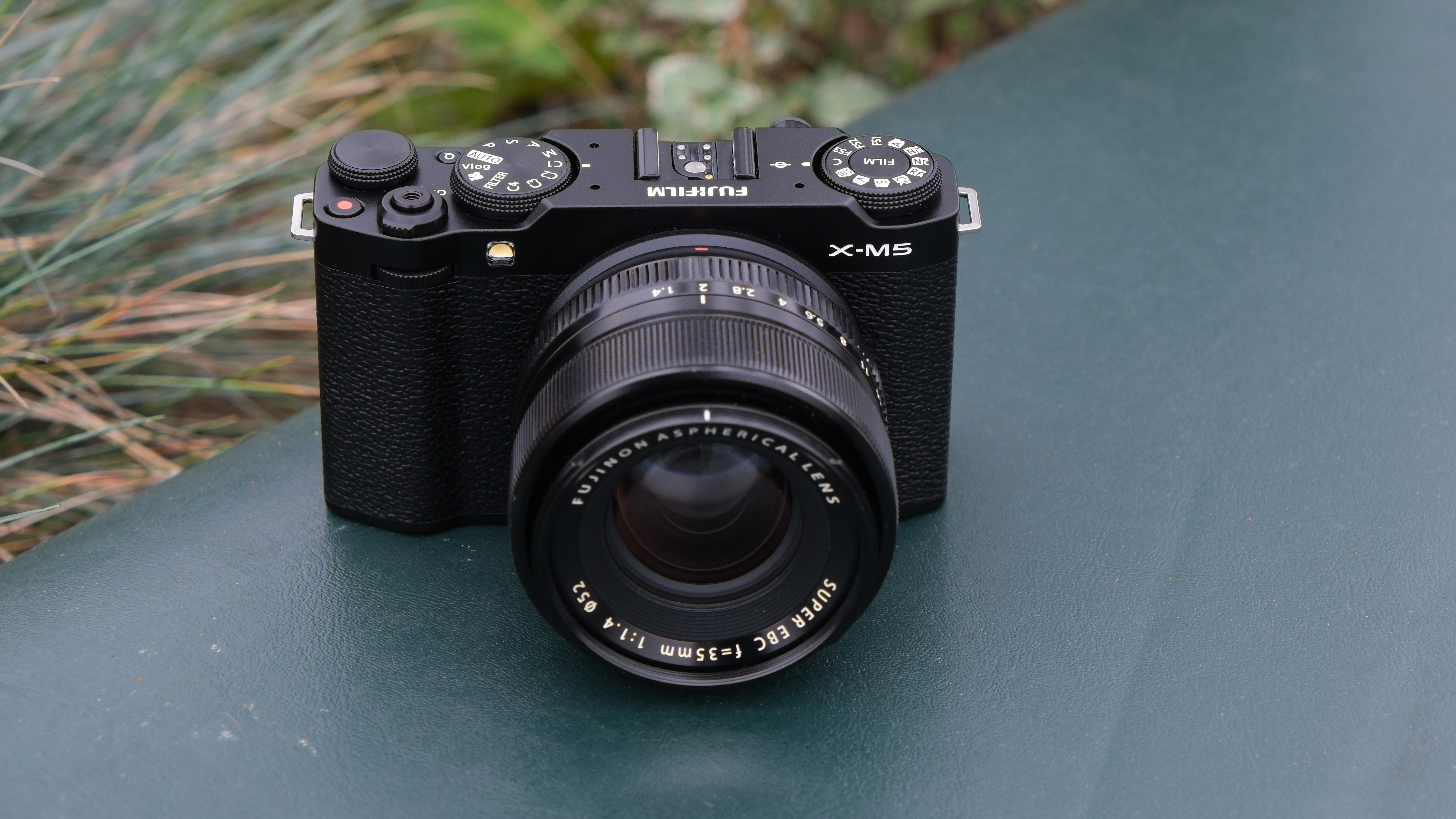
Specifications
Reasons to buy
Reasons to avoid
✅You want a focused street kit: APS-C depth of field with fast primes balances subject separation and context nicely.
✅You want discreet carry: a compact body with small XF primes (23mm f/2, 27mm f/2.8) keeps you low-profile on the street.
❌You want all-weather peace of mind: not all bodies in this class are fully weather-sealed - rain covers may still be wise.
❌You want ultra-low-light latitude: APS-C is excellent, but full-frame rivals hold an edge at very high ISO.
The Fujifilm X-M5 is an ideal choice for street photographers seeking a compact, capable, and affordable camera. With its stylish and ergonomic design, the X-M5 comfortably fits in pocket, making it excellent for extended shooting sessions in urban environments. What's more, image quality consistently rivals more expensive cameras, even matching results from premium models like the Fujifilm X100VI, at roughly half the price.
While the absence of a viewfinder may initially deter photographers accustomed to traditional cameras, those familiar with smartphone photography will quickly adapt to composing images on the X-M5’s high-quality touchscreen. Autofocus performance is reliable, benefiting from Fujifilm’s subject recognition algorithms for tracking people and animals in your shots.
For photographers who also create video content, the X-M5 delivers impressive features, particularly its open-gate recording capabilities. This is especially valuable as demand grows for content compatible with multiple aspect ratios.
Overall, the Fujifilm X-M5 offers an exceptional blend of portability, functionality, and image quality, making it a standout option for street photography enthusiasts seeking maximum value without compromising on performance.
Read more: Fujifilm X-M5 review
Features | Powerful video specs and Fujifilm's latest autofocus. | ★★★★★ |
Design | Solid-feeling compact body with small lenses to match. Though the lack of EVF is a shame. | ★★★★☆ |
Performance | Great quality stills and video, with Film Simulations offering ready-to-share content | ★★★★★ |
Value | Undercuts rivals on price, but not on power. Impressive. | ★★★★★ |
Best medium-format camera for street photography
Specifications
Reasons to buy
Reasons to avoid
✅You want a classic wide street view: the fixed 35mm f/4 (28mm full-frame equivalent) is made for scenes, sidewalks and layered compositions.
✅You want huge crop latitude: a 102MP medium-format sensor lets you reframe later (and use in-camera digital crops) without throwing away detail.
❌You want budget street gear: pricing is decidedly premium, landing well above many APS-C/full-frame street combos.
❌You want after-dark speed: the fixed f/4 lens and no IBIS make low-light street work trickier than with faster, stabilised rivals - expect higher ISOs or a brace.
Fujifilm's revolutionising of digital medium format has made all sorts of exciting things possible, including street photography on large-sensor cameras! The GFX100RF is a revelation; essentially, it's a large-sensor version of the X100VI, for those with deeper pockets who don't mind sacrificing a bit of speed and agility in favour of image quality to die for. More than 100MP of resolution on a large-format sensor? When I reviewed the images from this camera while testing it, I struggled to say anything other than "wow".
Indeed, it's a titan of image quality, however with a 6fps burst rate and a fast focusing system that's on a par with other Fuji cameras, it holds its own for street work. You really can grab snapshots with this thing that have all the depth and tonality of a luxurious medium format portrait, and that is something truly special.
It more or less holds its own in low light: I took it to the streets of Prague at night, with only streetlights and shop fronts for light, and managed to get sharp shots at around 1/25sec. With the X100VI and its in-body stabilisation system, you'll do much better. Low light shooting is also further complicated by the fact that the GFX100RF has a lens with a maximum aperture of f/4. Again, the X100VI is superior in this regard.
Honestly though, this camera must have been such a balancing act to make that I'm just impressed Fujifilm pulled it off at all. The fact that you can carry the GFX100RF around like a point-and-shoot and then use it to produce 102MP images of astounding depth and quality – as I said in my review, it's a genuine marvel of engineering. And despite its huge sensor, the GFX100RF isn't even the most expensive camera on this list, not while the Leica Q3 is in town.
Read more: Fujifilm GFX100RF review
Features | A first-class sensor/lens combo, though there's no IBIS and the max. aperture is f/4. | ★★★★☆ |
Build & Handling | Gorgeous design meets a carry-everywhere form factor. | ★★★★★ |
Performance | That 102MP medium format quality is utterly sublime, though it's less assured in low light. | ★★★★☆ |
Value | Certainly costly, though I think it's priced fairly for what you get. | ★★★★☆ |
Most versatile camera for street photography
Specifications
Reasons to buy
Reasons to avoid
✅You want crisp handheld detail: the 40MP sensor and IBIS reward careful framing and give crop latitude for reframing later.
✅ You want a focused street kit: small XF primes (23/27/35) keep the rig compact and unobtrusive.
❌You want zero rolling/banding risk: the e-shutter can show artefacts under some artificial lights or with very fast motion - use mechanical when unsure.
❌You want tiny files: 40MP RAWs are hefty - expect more storage needs and a fussier workflow.
The Fujifilm X-T5 marks the latest step in Fujifilm's X-T series, and for me, it's more of an evolution than a revolution. As someone deeply passionate about street photography, especially capturing simulations of my favorite films too, this camera feels like a classic SLR-style companion with a modern twist.
I love the traditional dials on the top of the camera; they make changing ISO and shutter speed settings a breeze, giving me that tactile connection to my craft. The X-T5 builds upon the beloved X-T4 with an impressive 40.2MP sensor and 10-bit 4:2:2 video at 6.2K/30P, all while maintaining its lightweight design.
One of the standout features for me is the 3-way tilting touchscreen, which adds flexibility to image composition. In terms of its aesthetics, feel, and handling, the X-T5 stands out from the crowd, offering a unique shooting experience compared to other cameras like the Fujifilm X-H2.
If you're torn between the X-T5 and the X-H2, I'd recommend checking out our comparison article, "Fujifilm X-T5 vs X-H2," to see which one aligns better with your needs and preferences.
Read more: Fujifilm X-T5 review
Features | High-resolution, IBIS, 6K video. What more could you want? | ★★★★★ |
Design | Beautiful styling, even if the manual dials won't be for everyone | ★★★★☆ |
Performance | Fantastic image quality and exceptional subject-detect autofocus makes it a winner for street. | ★★★★★ |
Value | Excellent value considering the features and quality on offer. | ★★★★★ |
Best street photography camera for reach
Specifications
Reasons to buy
Reasons to avoid
✅You want true pocketability: a jeans-pocket camera you’ll actually carry all day, not just on “photo days.”
✅You want versatility on the fly: the 24–200mm (equiv) zoom lets you go from layered street scenes to tight candid portraits without moving your feet.
❌You want creamy low-light files: the 1-inch sensor and f/2.8–4.5 lens can push ISO higher than APS-C/full-frame rivals at night.
❌You want glove-friendly ergonomics: tiny controls can feel fiddly; it’s easy to nudge settings when working fast.
A camera doesn’t get seven iterations unless the idea is good, to begin with, and the Sony RX100 VII is the latest in a line of terrific tiny compacts. Pairing a 24-200mm equivalent Zeiss-engineered lens with an extremely sophisticated autofocus system and enviably fast burst shooting is a winner in anyone’s book, and all this makes it right up the alley of any street photographer.
All this tech doesn’t come cheap, however, and one could argue, as we did in our review, that the RX100 VII is a wee bit aggressively priced for a camera of its size (and sensor size).
The good news, though, is that if the asking price is too dear for you, the preceding RX100 models are still largely in production, so by all means have a look and see if one better suits you (our RX100 comparison guide will come in handy there).
Read more: Sony RX100 VII review
Features | With its compact size, 20MP stills and 4K video, it's a travel-friendly street camera. | ★★★★☆ |
Build & handling | A massive 24-200mm zoom gives you huge versatility in a pocket-sized body. | ★★★★★ |
Performance | This really is a compact powerhouse in your pocket, even with a few fiddly control niggles. | ★★★★☆ |
Value | It's pricey for its specs, but when you factor in its size, there is nothing else like it | ★★★★☆ |
Best black and white street photography camera
Specifications
Reasons to buy
Reasons to avoid
✅You want pure black-and-white: a dedicated monochrome full-frame sensor delivers uncanny acuity, micro-contrast, and rich tonality without a colour filter array.
✅You want robust build: metal construction feels bombproof for daily carry in the city.
❌You want colour sometimes: it only shoots black-and-white - there’s no “switch to colour” for murals, neon or mixed light scenes.
❌You want a built-in viewfinder with info overlays: the optical RF is beautiful but minimalist; an add-on EVF costs extra if you want live-view aids.
The Leica M11 Monochrom is a camera that speaks directly to my niche interests, and maybe yours too. As a black-and-white, manual focus-only rangefinder camera, it stands apart from the mainstream offerings. Sure, it can't shoot video, and the price tag of $9000 (£8,300) is hefty, but these characteristics are what make it so special.
Far from being shortcomings, these features encouraged me to approach my photography with a more deliberate mindset. Every shot becomes a thoughtful process, reminiscent of the glory days of film photography. Using the M11 Monochrom has been one of the most enjoyable photography experiences I've had in a while.
I understand that this camera isn't for everyone. It's tailored for a specific audience, and Leica knows exactly how to cater to their needs. For those of us who appreciate its unique qualities and black-and-white only images, there's good news: it's possibly the best version of this camera to date.
Read more: Leica M11 Monochrom review
Features | Only shooting black and white stills, it's a highly specialised camera. | ★★★★☆ |
Build & handling | Built to the Leica reputation, this is a solid camera that handles like a dream. | ★★★★☆ |
Performance | Stunning imagery and simply the best low-light performance from any Leica camera. | ★★★★★ |
Value | Rather expensive for a very niche camera. Though if you're in that niche, you'll love it. | ★★★★☆ |
Lab Data and Comparisons
How to choose the best camera for street photography
When it comes to street photography, I've learned that the best mirrorless cameras and the best compact cameras may boast various features, but specific requirements truly make a camera shine in this genre.
For me, a good street photography camera must be small and discreet. It's essential to blend into the surroundings, observing scenes without drawing unnecessary attention. Big bodies and bulky lenses tend to stand out, which is not ideal.
Speed is another crucial factor. Snappy autofocus and a reliable burst mode ensure I capture the decisive moment without delay. It's reassuring to know that if I miss a shot, it won't be due to the camera's limitations.
When it comes to controls, intuitiveness is key. I prefer well-laid-out and tactile controls that allow me to adjust settings quickly without diving into menus. After all, time is of the essence during a street shoot.
Lastly, weight matters. Carrying the camera around my neck or on my shoulder for extended periods requires it to be lightweight. The ideal street camera shouldn't weigh me down as I navigate through the urban landscape, capturing fleeting moments of life.
How we test street photography cameras
In evaluating what cameras made the best ones for street photography, we conduct thorough assessments both in real-world shooting situations and under meticulously controlled lab conditions. Our lab examinations focus on key performance metrics including resolution, dynamic range, and signal-to-noise ratio.
Resolution is gauged using ISO resolution charts, while dynamic range assessments are facilitated through DxO Analyzer test equipment. Additionally, we utilize DxO Analyzer for comprehensive noise analysis across the camera's ISO range.
As for compact cameras, our evaluations are primarily based on real-world results and ergonomic handling, serving as the foundation for our informative guides.
The best camera deals, reviews, product advice, and unmissable photography news, direct to your inbox!

Gareth is a photographer based in London, working as a freelance photographer and videographer for the past several years, having the privilege to shoot for some household names. With work focusing on fashion, portrait and lifestyle content creation, he has developed a range of skills covering everything from editorial shoots to social media videos. Outside of work, he has a personal passion for travel and nature photography, with a devotion to sustainability and environmental causes.
